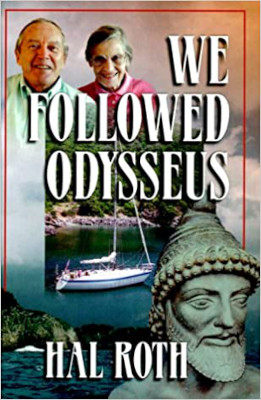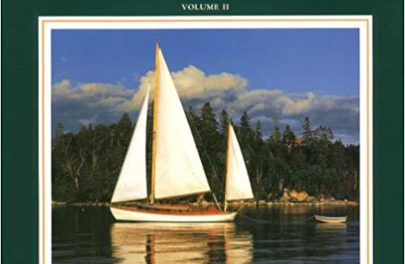
Hal Roth is perhaps best described as an adventurer — but not the foolhardy type. Hal is also a storyteller extraordinaire. Fortunately for him and his wife, Margaret, who has supported his many dreams, Hal’s had some great stories to tell.
The Roths discovered sailing in 1962, while they were in their 30s. They bought Whisper, their 35-foot Wauquiez Pretorien, in 1966 and set off on an 18,500-mile South Pacific voyage the following year. This earned them the coveted Cruising Club of America Blue Water Medal and resulted in Hal’s first sailing book, Two on a Big Ocean. Not bad for beginners.
Many miles and books later, the Roths, now in their 70s, have discovered another adventurer and retraced his route through the Mediterranean. This adventurer was the Greek, Odysseus, known as Ulysses to the Romans. It’s uncertain whether this man was a mythical hero, a real human enlarged significantly by literary embellishments over the centuries, or an obnoxious ill-mannered braggart and, in Hal’s words, a noble thug. The author of the Iliad and Odyssey, Homer himself may be a legend.
In the book, We Followed Odysseus, Hal and Margaret struggle with fact and fiction and wind up having a two-year odyssey of their own telling the story of Odysseus, intertwined with the reality of that man’s world 32 centuries later. They had to look a long way back. Ruins scarcely exist, and other evidence is harder to come by.
Homer’s stories of Odysseus begin with the Trojan War of 1200 BC. The tale of the siege is reported in the Iliad. Our hero’s travels home are told in the Odyssey. The journey which, at its shortest could have been only 565 nautical miles, took Odysseus perhaps as many as 3,000 nautical miles and 10 years in a gradually diminishing fleetof boats (starting with 616 men and 12 ships) beset by weather, gods, humans, and monsters until only Odysseus is left to return home alone.
The fighting ships of the time were powered by oarsmen or square sails, depending upon the weather, and were useless to windward. Because they were in open boats, had very limited navigational tools, had no sleeping quarters, and needed to provision often, these sailors stayed near shore, which lengthened their journeys. Complications came for Odysseus’ crew when they were blown to sea without charts or a means for getting bearings.
“Why,” Hal asks, “in God’s name would anyone want to go to the trouble of retracing the voyages of a prickly Greek who may not have even existed?” Then he answers his own question, “Because the tales are just true enough to be possible.” Archaeological evidence suggests that at least part of these tales is true. Besides, Hal and Margaret had fun following the route, and the rest of us can have just as much fun speculating with them about the stories which were told, and enjoying the Roths’ modern-day voyage in an ancient cruising ground.
We Followed Odysseus by Hal Roth (Seaworthy Publications, Inc., 1999)




